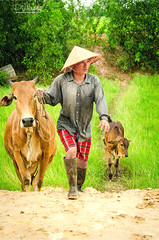
- Read More About:
- Atlex Stockyards Website
Mosquitoes are best controlled by eliminating their breeding grounds. Females lay their eggs in batches of 50-200 directly in water or in areas that will flood later. Eggs may remain dormant for many months and then hatch within minutes after being flooded by a spring or summer rain. Although they can be blown into your yard by the wind, it is likely that the mosquito biting you has come from just a few yards away! Adult mosquitoes lay eggs in damp soil or rotting vegetation. The eggs remain dormant until rain saturates the area. A small, hidden pool of water that remains for ten days may produce hundreds of ravenous pests.
An organized search among neighbors may turn up dozens of mosquito hiding places. Look for clogged gutters, leaf-filled drains, drain outlets from air-conditioners, plastic wading pools, dog dishes, soft drink cans, plastic bags, old tires, “junk” behind the garage, birdbaths, potted plant saucers, standing water in tire ruts, stumps, tree holes, puddles hidden under English ivy and pools left by flooded streams.
If a pool of water can’t be permanently drained, i.e. bird baths and landscape water features, a special organic mosquito control can be used. The mosquito disease spore Bacillus thuringensis is sold at garden centers. A common brand name is “Mosquito Dunks”. These can be put in pools of standing water, where they provide control for several weeks. This product is organically safe and can be used in birdbaths and around pets. Be sure to follow the directions on the label of any product that you use.
Examine standing water weekly to make sure that there are not mosquito larvae present. Dip out some water with a white styrofoam cup and look for the moving black specks that are larvae.
Any temporary body of water that is present for more than a week can be a mosquito breeding habitat.Flooded cattle hoof prints in a muddy field have been known to produce dozens of mosquitoes each.The limiting factors are the longevity of the aquatic habitat, and the duration of the mosquito species’ life cycle. The shortest life cycle on record for a mosquito is about 4.5 days, and this particular species breeds in mid-summer in the sun-warmed puddles of flooded fields, or areas of forest clear-cut. Thus, most mosquito species can complete their life cycle in a flood pool or puddle that is present for more than 2 weeks, but will not be able to survive in a puddle that dries up after only one week.
For more relevant information, check this links below:
pest control south auckland, insect control west auckland